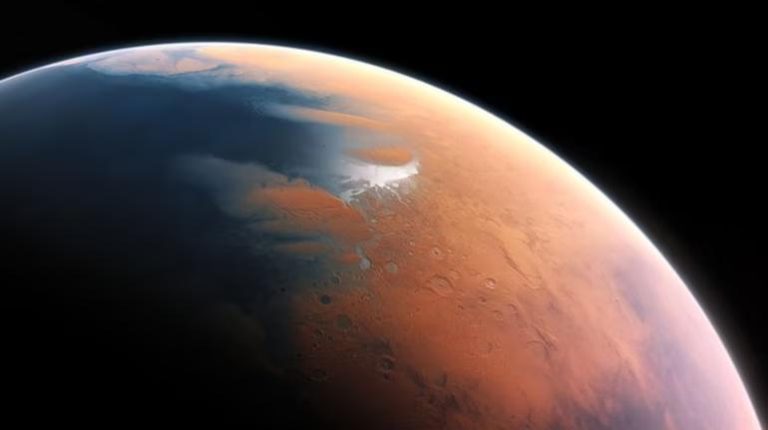
Mars may have once had rain & snowfall, finds new study
The Red Planet, Mars, has long been a subject of fascination for scientists and space enthusiasts alike. Over the years, numerous studies have suggested that there is evidence of water existing on the surface of Mars around 4 billion years ago. However, a new study by the University of Colorado Boulder has shed more light on the Martian climate, revealing that the planet may have once experienced rainfall and snowfall.
The study, published in the journal Science, suggests that Mars likely had a warm and wet climate in the past, with valleys and channels formed by flowing water. This finding has significant implications for our understanding of the Martian environment and the possibility of life existing on the planet.
So, what led scientists to this conclusion? According to the study, researchers analyzed data from NASA’s Mars Reconnaissance Orbiter, which has been mapping the Martian surface since 2006. By studying the planet’s topography, the team was able to identify features that are characteristic of fluvial systems, which are formed by flowing water.
The scientists found that the valleys and channels on Mars are similar in shape and size to those found on Earth, which are formed by rivers and streams. This suggests that Mars may have had a similar climate to Earth in the past, with rainfall and snowfall playing a crucial role in shaping the planet’s landscape.
One of the key features that led the team to this conclusion is the presence of “recurring slope lineae” (RSL) on Mars. RSL are dark streaks that appear on the planet’s slopes during the warmest months of the year, and are thought to be caused by the flow of briny water.
The team analyzed data from NASA’s Mars Reconnaissance Orbiter, which has been mapping the Martian surface since 2006. By studying the planet’s topography, the team was able to identify features that are characteristic of fluvial systems, which are formed by flowing water.
“We found that the RSL are not just random streaks of water, but are actually part of a larger network of valleys and channels that were formed by flowing water,” said Dr. Colin Dundas, a planetary scientist at the University of Colorado Boulder and lead author of the study.
The study’s findings have significant implications for our understanding of the Martian environment and the possibility of life existing on the planet. “If Mars had a warm and wet climate in the past, it’s possible that life could have existed on the planet,” said Dr. Dundas.
The study’s findings are also significant for future Mars missions. “If we can confirm that Mars had a warm and wet climate in the past, it could provide a new target for future missions to search for signs of life,” said Dr. Dundas.
The study’s findings are not without controversy, however. Some scientists have questioned the team’s methodology, suggesting that the data may not be reliable.
“I think the study is an interesting idea, but the data is not robust enough to support the conclusions,” said Dr. David Kass, a planetary scientist at the University of California, Los Angeles.
Despite the controversy, the study’s findings are significant and have the potential to change our understanding of the Martian environment. As scientists continue to study the planet, we may learn more about its climate and the possibility of life existing on Mars.






